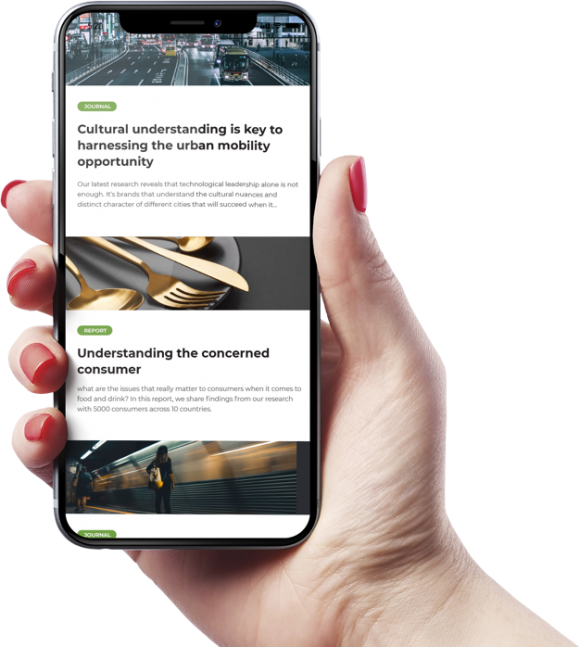People believe that safety can be purchased through a contract, a premium, or the comfort of a mutual agreement. That illusion is slowly collapsing. The promise of protection is no longer enough for consumers, who can now monitor every heartbeat, every drop of rain, and road condition in real-time. This shift is transforming the insurance industry from one based on probabilities to one driven by data.
Consumers are rejecting protection they can't shape. As people gain access to more personal and behavioral data, they expect a greater say in how coverage works. This is forcing insurers to rethink their operating models. The same data that empowers individuals is reshaping how carriers assess, price, and manage risk.
As wearables, weather dashboards, and connected cars make risk more visible and measurable, underwriting is shifting from a static to an adaptive approach. Data is no longer just an input; it’s both the proof of risk and the mechanism to manage it. Insurers that can turn these signals into real-time intelligence will define the future of underwriting.
How IoT Data Improves Underwriting Efficiency and Pricing Precision
The insurance industry is moving from paper-based policy documents to digital data networks. For carriers, underwriting becomes a process of real-time measurement and recalibration.
The traditional cycle of quoting, binding, and renewing gives way to adaptive models that continuously track exposure, allowing underwriters to adjust premiums as signals change. Telematics, home sensors, and biometric devices feed pricing engines that detect micro-risk patterns invisible in historical data, improving pricing accuracy.
IoT reduces pricing drift, the gap between modeled and actual risk. Fleet policies can now be priced based on live metrics, such as speed consistency and braking behaviour. At the same time, life and health models incorporate sleep and activity data for greater price accuracy and stability.
Claims teams utilize device alerts to triage cases more efficiently and reduce settlement times.
Ping An, a leading Chinese financial services and insurance group, aggregates health, lifestyle, and economic signals across its vast ecosystem, feeding models for health and life risk. In the United States, Lemonade trains its AI underwriting engine, Cooper, on continuous interaction and claims data to reduce quote latency and handling cost. Both demonstrate how IoT and behavioral inputs are converging to create adaptive pricing systems that learn and self-correct over time.
The strategic advantage is capital efficiency: tighter alignment between exposure and reserves, lower volatility, and freed capacity for growth.
Behavioral Segmentation Drives Dynamic Pricing and Portfolio Quality
Where segmentation once relied on age or income, it now classifies policyholders by how they manage risk, rather than who they are. Instead of grouping millions of drivers or homeowners into static tiers, carriers can build microsegments that reflect behavioral consistency, such as safe drivers, connected homeowners, or responsive consumers. These profiles feed dynamic pricing engines, fine-tuning premiums for greater accuracy and fairness.
Telematics programs allow underwriters to recalibrate rates, as permitted by regulation, based on observed performance. In health and life insurance, similar models are emerging through fitness trackers and lifestyle apps, where preventive habits yield premium discounts. Behavioral segmentation turns risk reduction into measurable value, linking personal discipline to financial outcomes.
Ping An’s Good Doctor data correlates lifestyle patterns with renewal and claims outcomes, informing pricing across health, auto, and life. In Europe, AXA Climate utilizes environmental and behavioral indicators to tailor agricultural and weather-index products, resulting in faster payouts and higher adoption rates.
Insurers can now align policy structures with behavioral archetypes rather than demographic assumptions. For instance:
- Continuous sharers accept rolling rate adjustments.
- Conditional users activate coverage under verified triggers, thereby improving coverage take-up during peak risk periods.
- Privacy-driven holdouts prefer fixed rates paired with stronger catastrophe layers.
These categories enable insurers to diversify their pricing strategies and manage adverse selection. As behavior becomes the currency of underwriting, verified actions turn into rating inputs. Carriers that integrate this intelligence into pricing architecture will improve margins and portfolio mix.
From Actuarial Averages to Behavioral Prediction in Underwriting
Traditional underwriting assessed risk at issuance or renewal using proxies like age and location. Behavioral prediction recalibrates exposure as new signals arrive. Underwriting is evolving into a continuous decision system powered by IoT, telematics, and behavioral analytics.
These models evaluate risk not by what someone is, but by what they do. A driver’s braking smoothness, a household’s maintenance history, or an individual’s health adherence can serve as dynamic rating factors.
The more accurately insurers quantify behavior, the less capital they must hold. Real-time monitoring narrows the gap between modeled and actual exposure, improving reserve efficiency. The effect shows up in lower loss-ratio volatility and more efficient capital utilisation.
Lemonade’s Cooper engine continuously refines segmentation, cutting quote times and handling costs. Ping An correlates lifestyle data with policy outcomes across finance, health, and automotive verticals to price dynamically and identify early signs of portfolio stress.
Actuaries are becoming curators of model inputs. Underwriters now manage feedback loops between consumer behavior and capital deployment. Risk managers monitor predictive model drift as closely as they once tracked loss triangles.
Continuous-learning models require explainability, bias testing, and transparent reason codes. Emerging frameworks in Europe, Asia, and North America are formalising these expectations. Carriers will need governance that combines actuarial discipline with data science accountability to ensure that predictions enhance fairness rather than undermine it.
The challenge is no longer predicting behavior, but using it responsibly to strike a balance between profitability, equity, and public trust.
How Parametric Triggers and IoT Signals Optimize Payout Speed and Capital Use
Parametric insurance is a practical bridge between predictive analytics and financial resilience. Unlike traditional indemnity models, which reimburse verified losses after assessment, parametric coverage pays out automatically when measurable thresholds are met — rainfall above a preset level, wind speeds exceeding a limit, or temperatures crossing a defined range.
The global parametric insurance market is projected to surpass USD 51 billion by 2034.
For insurers, the appeal lies in speed, transparency, and liquidity. Automated payouts often shorten claims cycles from months to days, reducing both operational expense and reputational risk. More importantly, parametric systems are beginning to interact with IoT and behavioral data.
Connected sensors, telematics, and satellite imagery now feed underwriting models that capture both environmental and behavioral variables. A home equipped with leak detectors can adjust coverage before damage occurs. In agriculture, satellite and ground-based data from precision-farming tools support policies that trigger payments within days of drought or excessive rainfall. These integrations reduce claims volatility and strengthen the link between exposure and reserves.
The Caribbean Catastrophe Risk Insurance Facility (CCRIF) provides index-based policies to Caribbean governments, distributing disaster funds within two weeks of hurricanes or earthquakes. African Risk Capacity (ARC) uses rainfall-index models for drought response, enabling early action before food insecurity worsens. In Asia, Sompo Holdings operates sensor-linked weather programs across India, Vietnam, and Indonesia. Ping An incorporates smart-sensor data into its Smart Risk Control platform to improve property and agricultural underwriting. Global reinsurers, such as Swiss Re and AXA Climate, are expanding parametric structures in agriculture, renewable energy, and catastrophe coverage, combining satellite monitoring with sensors for verification.
Industry analysts note that these mechanisms are still scaling, but early results show faster payouts, greater transparency, and lower basis-risk variance — the gap between modeled and actual loss. When paired with behavioral insights, such as preventive maintenance or compliance behavior, parametric systems further stabilize portfolio performance by aligning exposure, reserves, and reinsurance strategies in near real time.
For insurers and reinsurers, the strategic value extends beyond product innovation. Parametric triggers verified through multiple data sources improve capital agility and solvency strength by reducing uncertainty around large-scale events. As these models mature, risk is being positioned as a transparent, data-backed asset class that capital markets can price with greater confidence.
Strategic Priorities for Insurers in a Predictive Risk Economy
Insurers that treat behavioral and IoT data as assets will gain pricing precision and portfolio resilience. The shift demands coordination across technology, underwriting, and governance.
- Build a streaming data foundation.
Create a governed feature store for telematics, sensor, and climate data. Standardize refresh rates by use case and establish data-lineage checks to ensure reliability.
Track: reduction in pricing drift and time-to-quote. - Convert behavior into rating factors with guardrails
Expand beyond traditional models, but keep all factors interpretable and auditable. Define limits for premium adjustments and test new variables before production.
Measure: price-adequacy uplift and loss-variance reduction by segment. - Make segmentation a capital tool, not a persona library.
Link behavioral segments to rating cadence, reinsurance posture, and discount ceilings.
Brand impact: A clear data-value exchange enhances retention and fosters trust. - Tie underwriting to capital allocation in real time.
Share exposure data with capital teams weekly. Use parametric layers for quantifiable perils and reassess attachment points as verification improves.
Key indicator: solvency coverage and reinsurance-spend efficiency. - Industrialize model governance and explainability.
Form joint actuarial–data-science committees to approve features that influence prices, and record reason codes for every pricing decision.
Track: model-override rate and regulator-inquiry turnaround. - Redesign products for context and clarity.
Offer modular policies that activate under verified conditions, such as severe weather or travel. Publish “what moves price” schedules and customer data-control dashboards.
Brand impact: Transparency reduces complaint rates and strengthens loyalty. - Modernize claims with verified signals.
Utilize event data to automate triage and route high-probability total losses for expedited settlement.
Metric: cycle time from claim to payment and auto-adjudication rate. - Build data ecosystems through partnership.s
Collaborate with mobility, health, and climate platforms. Negotiate verified data quality and co-owned prevention outcomes.
Outcome: partner-sourced signal share and measurable prevention events. - Align incentives with prevention.
Reward verifiable risk-reduction actions, such as safe driving or climate retrofits.
Measure: frequency reduction per prevention credit issued. - Prepare the organisation for continuous underwriting
Train underwriters as data strategists, aligning performance metrics with volatility control and price precision.
Indicator: decline in intervention rate as model confidence increases. - Embed regulatory readiness.
Maintain explainability dossiers for all models influencing price or coverage. Provide standardized reason codes on renewals.
Track: audit-closure rate and customer comprehension.
Stage transformation in phases
- Phase 1: real-time dashboards and consent UX.
- Phase 2: bounded dynamic pricing for opt-in cohorts.
- Phase 3: integration of behavioral triggers with capital and reinsurance.
Measure: incremental combined-ratio improvement by phase.
This operating model uses verified signals to drive pricing, capital allocation, and prevention in a single feedback loop. Insurers adopting this approach will transition from post-event indemnity to pre-event prediction, resulting in improved price adequacy, reduced volatility, and stronger solvency.
What’s Next for the Insurance Industry
Insurance is evolving from a system that prices uncertainty to one that continuously manages it. The industry’s next competitive edge will come from its ability to effectively interpret behavior, integrate verified data, and deploy capital in real-time while maintaining transparency and trust.
Predictive systems are narrowing the gap between what insurers know and how quickly they can act. Yet technology alone will not determine leadership. The differentiator will be behavioral intelligence, recognizing intent before loss and designing products that reward prevention over payout.
In this predictive economy, insurers are becoming architects of resilience. Leaders are embedding reason codes into pricing dashboards, developing early-warning systems for portfolio stress, and forming alliances that merge mobility, health, and climate data into unified risk ecosystems. Each move brings the industry closer to continuous underwriting, where capital, pricing, and behavior operate in sync.
The impact extends beyond efficiency. The age of risk has not ended; it has simply become legible. And in that clarity lies the next currency of trust.




